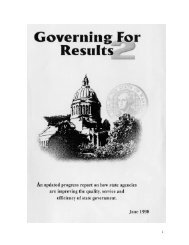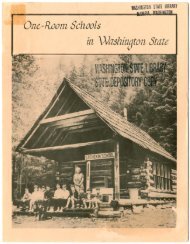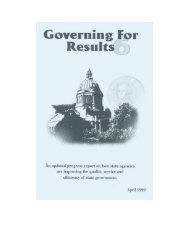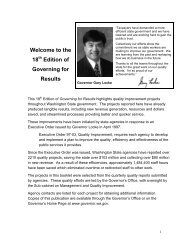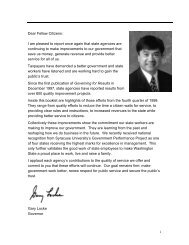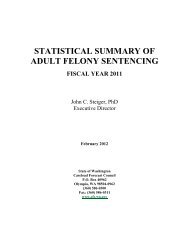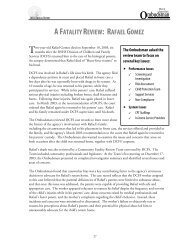BOOTH WHO? - Washington State Digital Archives
BOOTH WHO? - Washington State Digital Archives
BOOTH WHO? - Washington State Digital Archives
Create successful ePaper yourself
Turn your PDF publications into a flip-book with our unique Google optimized e-Paper software.
second deep-brain surgery. I’m sitting in the taxi, staring at the door to the hospital, hoping<br />
I can get my life back.” From there, he’d take the reader on a flashback to his childhood<br />
“and all those curve balls.”<br />
Less than 24 hours after the second surgery, he was heading home. He felt<br />
incredibly better. “All the outward symptoms of Parkinson’s had disappeared – magically,<br />
medically or miraculously. What did it matter? For the first time in 10 long years, I felt like a<br />
whole person again.”<br />
“It was a raging success,” Gardner told Dave Ammons. “The doc said, ‘I hit a home<br />
run with you.’ ” Having watched his decline with sadness, the longtime AP reporter was<br />
amazed by the results of the second surgery. “I’m on one-fifth the amount of medicine I<br />
was on before,” Booth bragged. “You might see a couple of clues about the disease, but<br />
most of the time you wouldn’t know I had Parkinson’s. I am calm. My temperament is even.<br />
I’m not hammered with drugs.” He said he’d been told he probably had “a good 10 years<br />
left” and he wanted to make the most them. Gardner turned 70 on August 21, 2006. It was<br />
a far happier birthday than the year before.<br />
* * *<br />
The morning after Booth announced his “last campaign” on TVW, he called Laird<br />
Harris, his former policy adviser. Harris had founded a public affairs consulting firm in<br />
Seattle after leaving the governor’s office in 1987. “I’d been working with him on education<br />
issues, so we talked often, but I had no idea he was thinking about ‘a Death With Dignity’<br />
campaign until that call,” Harris says. “It was typical Booth in many ways.” He’d get an idea<br />
and run with it, recruiting old friends and making new ones. Soon, some of the Northwest’s<br />
most successful Democratic campaign operatives joined the cause. Harris, an accomplished<br />
cat-herder, kept them on track.<br />
The two national organizations lobbying for “physician-assisted dying” expressed<br />
immediate interest in joining the effort. Their cause had met with little success other than<br />
in Oregon, where voters had narrowly approved a “Death With Dignity” ballot issue in 1994.<br />
Three years later, they soundly rejected a move to repeal it, and in 2006 the U.S. Supreme<br />
Court, on a 6-3 vote, ruled that Attorney General John Ashcroft had overstepped his<br />
authority in seeking to punish Oregon physicians who prescribed drugs to help terminally ill<br />
patients end their lives. At the time of Gardner’s announcement, a major effort was being<br />
made to get an Oregon-style aid-in-dying law through the California legislature. Having a<br />
popular ex-governor lead a campaign in <strong>Washington</strong> was a potential breakthrough.<br />
One of the first questions Booth had to weigh was whether he wanted to run his<br />
own campaign or get involved with the already organized groups and their state affiliates.<br />
Booth, Cynthia and Laird attended a getting-to-know-you meeting with representatives of<br />
the groups in Seattle in late February. Robb Miller, the executive director of Compassion &<br />
Choices of <strong>Washington</strong>, was there, together with Dr. Tom Preston, a member of his board.<br />
Barbara Coombs Lee and Kathryn Tucker represented the group’s national office, which<br />
165




